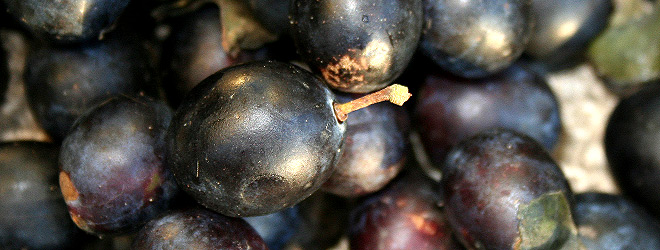Like a mini plum with a touch of sloe astringency, damsons aren’t to everyone’s taste. But know what to do with them and you’ll soon realise why they’re forager’s gold. Here are our reasons why damsons are such a delight.
1. They grow wild
‘English damsons’ are more elusive than the sloe, but well worth tracking down. Try poking around river and railway banks or those old, rambling footpaths that run behind ancient cottages. They can be confused with sloes and bullaces but are considerably bigger, slightly oval shaped and have more defined plum style stones.
2. Put them on your plot
Damsons are a good addition to a garden or allotment, particularly if you want to add a bit of fruit to your hedging. And you get to try more unusual varieties such as the pinkish ‘Merryweather’.
3. Jammy devils
They make a super, tart plum crumble and an even better jam. Sweet and sour.
4. Cheese? Yes, cheese!
No cows are milked in the making of damson cheese. It’s a jelly like thing that is traditionally served with venison or lamb in posh country inns. It can also double up as an accompaniment to a dessert or your more familiar, dairy cheeses.
5. The boozy bit…
In Eastern Europe damsons are the base ingredient for the distilled booze slivovitz. In the UK, damson wine was once guilty of many a hangover and is still a favourite among amateur fermenters (we’ll be adding some to a wild fruit wine medley). And damson gin is argued by many to be even better than sloe gin. Vodka tends to be the booze of choice for damson liqueurs – simply follow our sloe gin recipe replacing sloes with damsons and gin with vodka to make some. Or try damson gin. Or rum. Or even slivovitz for a double dose of damson.
Note: If you can’t get access to a damson tree then there’s every chance you’ll be able to buy damsons at your local grocers or market. A pound of fruit should only set you back a few quid and is well worth the cost.







